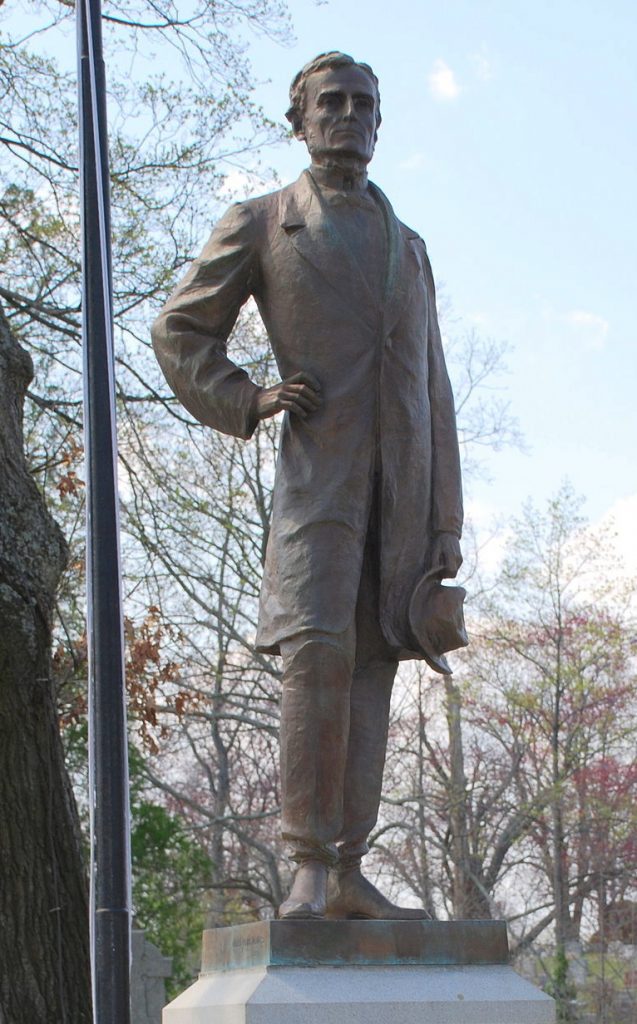I’ve been thinking a lot, as I bet many of you have, about the spark for tragedy in Charlottesville — the removal of the Robert E. Lee statue.
I’d like to point this out about it and many other Confederate statues: they did not go up immediately after the war as a way for the defeated but still proud South to honor its leaders. The vast majority of them went up in the late 1800’s and early 1900’s (the one in Charlottesville was commissioned in 1917 and installed in the 1920’s, by a private citizen, on land he bought and donated to the city) at the height of Jim Crow. They were an indirect but unmistakable message to black people who theoretically had rights and were trying to exercise them.
The timing of that is as though Germany, now, 70 years after the end of WWII, started erecting statues to honor Hitler, Goebbels, etc.
That being said, however, I’m not sure the right way to deal with this is for the statues to come down. I think they should be interpreted, as per the above, and to them should be added, facing them, statues of Sojourner Truth, of John Brown, of Frederick Douglass. Of the now-anonymous slaves they bought and sold. Of Emmett Till, of Schwerner, Goodman, and Chaney. Of Martin Luther King, Jr.
The history of the Civil War, Reconstruction, Jim Crow, and the Civil Rights Movement are what they are. Our side talks about inclusiveness; let’s include the whole of those histories together, side by side, so we can begin to talk about them.




Well said
And thoughtful
A couple of years ago, 2014 I think, the town I grew up in erected a statue of confederate general Patrick Cleburne, for whom the town was named. Cleburne was an Irishman that settled in the south of the US and served that region when the war started, not because he was ideologically aligned, but because it was his home and military men are used to serving at the pleasure of decision makers above them. Cleburne is famous for his suggestion near the end of the war to give freedom and payment to any slaves that would sign up to fight for the confederate side. His reasoning was that the war is not about slaves but about states rights, and the effort desperately needed manpower. His suggestion was met with very uncomfortable silence from the upper brass. The very recent installation of the confederate generals statue in a town in the south was, I’m pretty sure, not an affront to the sizeable black community there, and is used as a teaching topic that didn’t exist before. Lee’s statue can be as well. There’s lots of memes floating around the internets theae days comparing the destruction of confederate statues with ISIS destruction of historic non Islamic art in Iraq. Some are not interested in teaching moments
I am in complete agreement with you. We were somewhere in the SouthWest a few years ago and looking at an old statue venerating an important historical figure. A new plaque told the real history of his exploitation and murderous treatment of the indigenous population. This did far more to set things right than removing the statue.
I wonder why Yale didn’t do the same in responding to the controversy over the building named for the important founder of Yale who was later discredited as a rabid anti-abolitionist. I think that a plaque revealing him for what he really was would create long-lasting understanding and context.
Some conservative commentator said today-“what’s next, book burning?”
I have the same concerns.
I agree completely. The one thing I do want to come down is the Mississippi flag with the confederate symbol in the corner. Confederate flags should be in museums, same as Nazi flags. But they should not grace a state flag.
I’m not sure. To use your example of what if now people in Germany started to erect statues of Hitler, Goebbels, etc; what if they did? Would the inclusion of statues of their victims alongside them make a difference? I don’t honestly know. Obviously history should not be forgotten or whitewashed, but statues in public places are more often than not regarded as celebrations of the lives of the people portrayed by them. I am leaning toward the thought that where the statues of, say, Confederate generals have been removed, plaques on the empty pedestal could give the history and explain why there is no longer a statue there.
This is a welcomed, thoughtful essay. I like the idea of removing the statues because I think they are an affront to black people, who are, unfortunately, rarely asked their opinion on issues like this. But I think the statues can be relocated to a History Park of some sort, with full and accurate historical information. We know not to judge men and women of the past by the standards of the present, but that does not mean we can avoid presenting accurate and sensitive treatment of the uglier parts of our history. This can best be done by removing statues that were intended to intimidate (and for some still do), and reposition them in such a way that they can do so no longer.
3-point swish, for sure
Shira…totally agree with first part, but now there is more than the monuments at stake. I was thrilled when the mayor of Lexington, Ky said all civil war monuments in his city were being removed. I think a similar effort is underway in Baltimore. This movement is not about erasing statues or memory, but about eradicating white supremacy and confronting racism. Just as you or I as a Jew could never accept it if Germany one day built monuments to Nazis, saying they were part of history, I would never ask a black person to live in a community where statues honored those whose historic purpose grew out of their commitment to slavery and willingness to attack and kill Americans trying to preserve their country.
Well said! As a lifelong resident of Harpers Ferry, WV (minus a few wayward years after college), I’d happily welcome that change. I think it’s a great idea across the board!
If people could not visit the death camps in Germany today, it would be much easier for the Holocaust deniers to claim 600M Jews had not died in them. We do need to preserve the relics of discrimination–not to glorify but to educate. I completely agree.